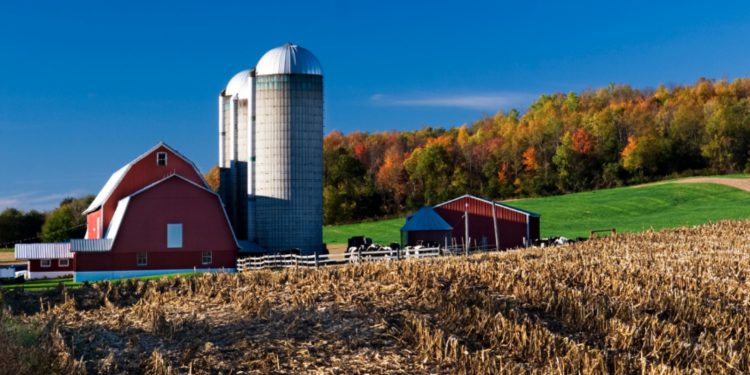Fertilising crops for livestock feed creates dangerous air pollution contributing to 16,000 deaths a year in the United States.
A study by the the University of Minnesota says 80 per cent of the deaths caused by air pollution from food production in the US are related to animal production.
The pollution is released from fertiliser use and tillage when growing the crops — primarily corn, hay and soybeans — that animals eat. Of particular concern is ammonia, which is released in large quantities from nitrogen fertilisers and manure, as it reacts with other pollutants.
Air quality–related health damages of food, published in the journal Proceedings of the National Academy of Sciences, measures how producing various foods affects air quality.
It’s the first time food-by-food accounting shows the damage to air quality caused by agriculture.
“Air quality-related mortality from the US food system is comparable to motor vehicles and electricity production,” said Jason Hill, professor in the Department of Bioproducts and Biosystems Engineering.
“There are many solutions that can improve air quality-related health outcomes”
“Nevertheless, food-related emissions are lightly regulated and less studied.
“Air quality-related mortality of food can be reduced by improving fertiliser and manure management practices, and by shifting to diets that contain greater portions of fruits, vegetables, legumes, whole grains and other plant-based foods.”
The authors estimated how much agriculture increased levels of fine particulate matter, or PM2.5, in the air. Chronic exposure to PM2.5 increases the risk of heart disease, cancer, and stroke. Farming activities such as plowing land, fertilising crops, and storing and spreading manure all release pollution that increases PM2.5 levels.
The study shows that, per serving, the average air quality-related harm of red meat to human health is two times greater than that of eggs, three times greater than those of dairy products, seven times greater than those of poultry, 10 times greater than those of nuts and seeds, and at least 15 times greater than the average of other plant-based foods.
“There are many solutions that can improve air quality-related health outcomes,” said Nina Domingo, a doctoral candidate in the Department of Bioproducts and Biosystems Engineering in the University of Minnesota’s College of Food, Agricultural and Natural Resource Sciences and College of Science and Engineering.
“Meaningful changes will require coordinated efforts of farmers, food-producing companies, consumers and policymakers.”























